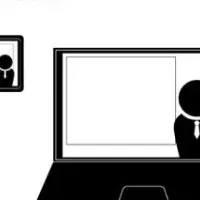
CATL and Ellen MacArthur Foundation Unite for Circular Battery Innovation
CATL and Ellen MacArthur Foundation Collaboration
In an inspiring initiative announced during the London Climate Action Week, two leading entities, Contemporary Amperex Technology Co., Limited (CATL) and the Ellen MacArthur Foundation, have united to accelerate the transition toward a circular battery economy. This collaboration emphasizes the necessity of dissociating new battery production from the incessant extraction of virgin raw materials, positioning sustainability at the core of future advancements in battery technology.
A Shared Ambition for Sustainability
The joint effort was introduced by Jiang Li, Vice President and Board Secretary of CATL, during a high-level panel discussion. This platform was dedicated to exploring collaborative strategies involving stakeholders from various sectors, including research, industry, and government. Jiang highlighted the significance of transformation in the battery sector, advocating that access to resources should now go hand in hand with resilience and sustainability.
Moreover, CATL has laid down a benchmark goal: by the year 2045, it aims for 50% of new battery production to be dissociated from virgin raw materials, presenting a clear long-term vision for the circular battery initiative.
Embracing Circular Economy Principles
At the heart of this collaboration are four guiding principles adapted from the Ellen MacArthur Foundation's circular economy framework. These principles are designed to reshape the entire battery value chain, encompassing everything from mining operations to manufacturing and beyond:
1. Rethink Systems: A holistic view of the battery ecosystem is essential. By implementing a circular mindset throughout the value chain, we can enhance resource efficiency while minimizing waste. This shift is crucial for fostering sustainable development.
2. Redesign Products: The journey towards circularity begins at the product design stage. Batteries should be designed for longevity and easy disassembly, ensuring that components can be reused or recycled efficiently, thus maximizing their lifespan and reducing material requirements.
3. Rethink Business Models: Innovative business models that separate resource consumption from economic growth are critical. Transitioning toward shared or service-based frameworks allows batteries to be more accessible while maximizing their utility.
4. Recycle Materials: An effective recycling framework must be established. This involves efficiently recapturing materials for high-value applications, which helps reduce reliance on new resource extraction and enables sustainable supply chains.
CATL's Implementation of Circular Principles
CATL has already begun implementing these principles across its operations. The company has rolled out a Carbon Chain Management System aimed at reducing carbon footprints across the battery value chain. Their energy storage systems have been engineered to last up to 18,000 cycles, substantially decreasing the need for raw materials and minimizing emissions in the process. Additionally, CATL plans to introduce 10,000 battery swap stations, which will streamline battery collection and recycling processes.
Furthermore, CATL runs the world’s largest battery take-back network, successfully recycling 130,000 tons of end-of-life batteries and recovering 17,000 tons of precious lithium salts in 2024 alone.
Global Energy Circularity Commitment (GECC)
To validate these shared ambitions in real-world scenarios, CATL is advancing the Global Energy Circularity Commitment (GECC), an open platform launched in March. This initiative invites collaboration among industry leaders, municipalities, and academic institutions to test various circular economy solutions. The endeavor seeks to share insights and scale the impact of circular methodologies across the industry.
Looking Ahead
This partnership lays the groundwork for future collaborations, enhancing transparency and fostering innovation within the global battery sector. Jiang Li remarked that true transformation cannot occur in isolation. It demands cooperative efforts across borders, sectors, and stakeholders, a vision that the Ellen MacArthur Foundation has passionately advocated for years. With this ambitious endeavor, the partnering organizations aim not only to reshape the battery landscape but also to pave the way for a sustainable future.
This ambitious initiative signals a dynamic shift toward a sustainable battery landscape. By fostering collaboration and innovation, CATL and the Ellen MacArthur Foundation aspire to drive meaningful progress that will reverberate throughout the entire global battery ecosystem.
Topics Energy)










【About Using Articles】
You can freely use the title and article content by linking to the page where the article is posted.
※ Images cannot be used.
【About Links】
Links are free to use.